Farm Life Journal - June 2019
June 7, 2019
By Tom Oswald
I didn’t realize when I wrote last month’s Farm Life Journal that the “less than textbook” beginning to the 2019 corn and soybean crops would lead to potentially millions of acres once intended for corn, left unplanted. Many farmers who couldn’t plant their intended 2019 corn acres will opt for the prevented planting provisions in their crop insurance. It’s a financial band-aid for them, not a windfall.
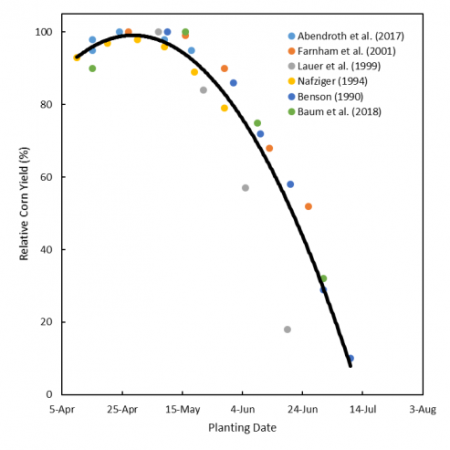
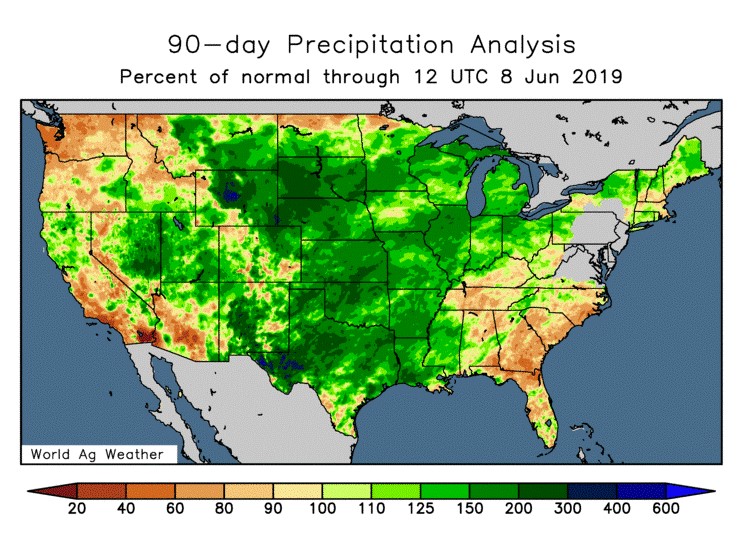
I was done planting soybeans near midnight on May 20. I recently did some replanting in drown out spots, but some areas are still too wet. These areas need more tile. With tile, those spots would be planted already.
I really hate wet springs. As I noted last month, there are a lot of ways to second guess decisions and a lot of ways to be unlucky. By the textbook, I have excess planting capacity – I don’t have the acres I used to farm because people I previously worked for renting land or doing custom planting (it’s like providing a lawn mowing service) have passed away.
My no-till systems helped big time this year because I didn’t have to spend hours preparing the ground for planting. If it was “kinda fit” to plant, I planted. With no-till type systems, herbicide application is critical. But wet soil isn’t as limiting to spraying herbicides like it is with tillage. Plus, a pass with my 90’ sprayer makes the aces fly by and tilling with my size of tractor would cover much less ground on each pass compared to the sprayer.
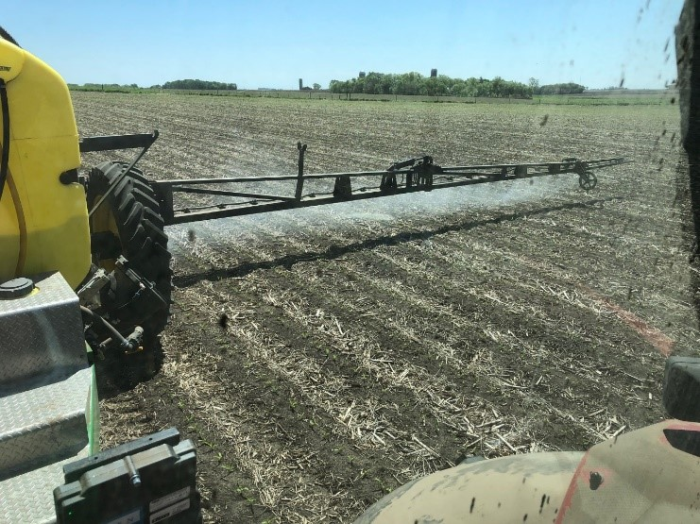
Long term, no-till soils tend to have better load bearing ability than tilled fields. Without tillage to break the soil down, it develops a structure that better supports traffic from farm equipment, so there’s a bit more leeway for getting into the field.
In a year like this, it might be tempting to pat yourself on the back for making good decisions or using strategies that lead to being “done” planting. I’m feeling more like I dodged some bullets and was a bit lucky – we could have been in the much wetter zone. A half day of work here and there made a huge difference. Some other farmers didn’t get those days in the field.
Since about 2002, we’ve planted our soybeans without tillage. Studies I did in the mid to late 1990s showed that tillage for soybeans really didn’t pay off for our fields. I increased test acres to become comfortable with the practice, and eventually dropped tillage, other than the strip-till fertilizer injection for corn. Planting soybeans directly into cornstalk residue from the previous crop might seem easy but it requires different management. Modern planters help a lot.
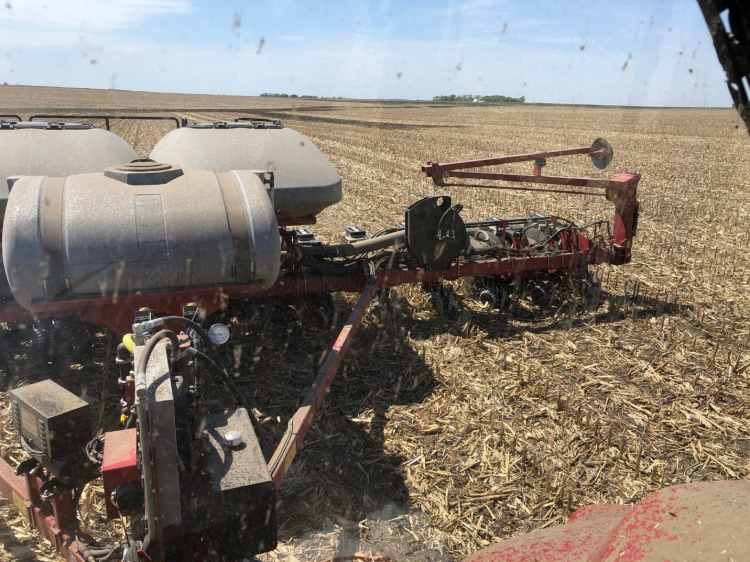
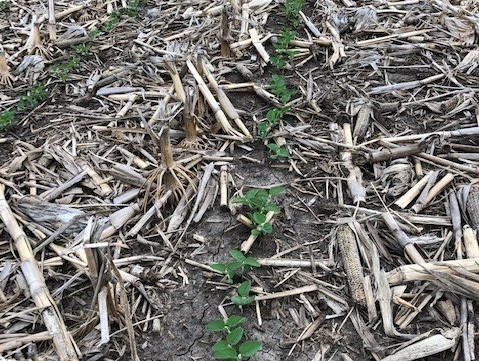
As long as the soybean seed is planted into soil, it will germinate and come right through very heavy cover. The growing point of the soybean plant is on top right from emergence, so once the plant senses sunlight and warmth it weaves its way through the residue. This works with cover crops as well.
In recent years, many farmers are working cover crops into their farming system because there are soil and water quality benefits. One challenge is that it takes a broad mindset to plant seed into a very tall and heavy residue.
For my 2016 soybean crop, I decided to try some acres with cereal rye cover. It’s a bit shocking the first time you pull a planter through such tall cereal rye cover.
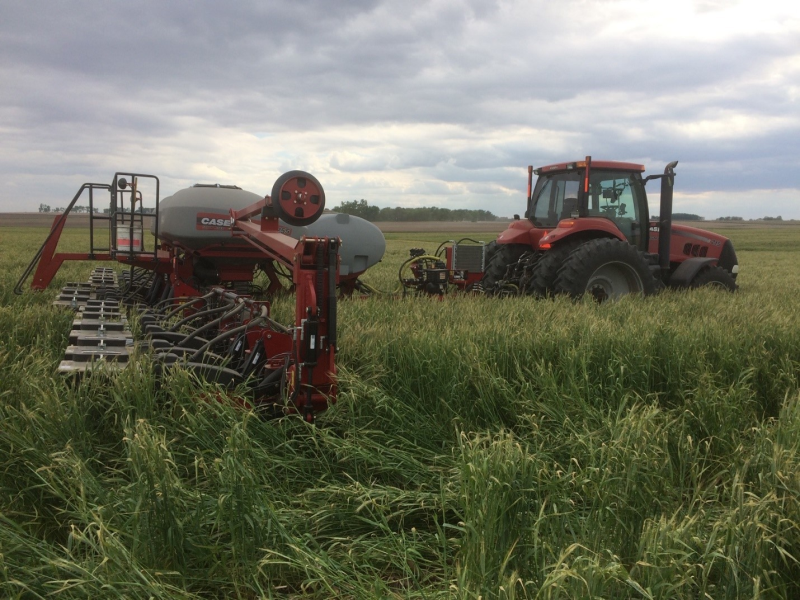
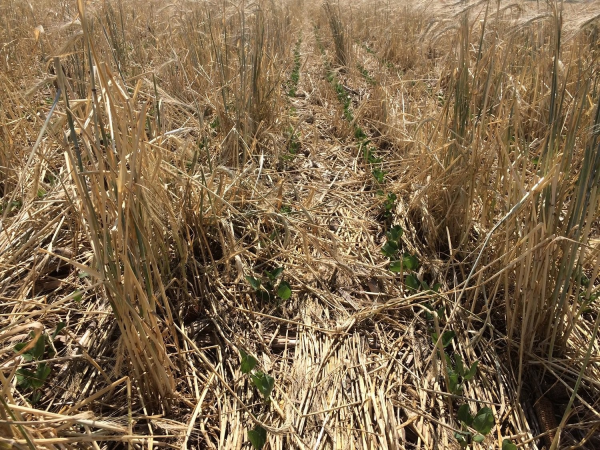
Still, the soybeans had no trouble emerging.
This is why the soybean/corn rotation works so well. The growing point of corn stays below ground for weeks after the plants emerge, so it doesn’t grow as fast when covered with residue. Soybeans tolerate high soil residue cover. Following a year of soybeans, corn tends to do better.
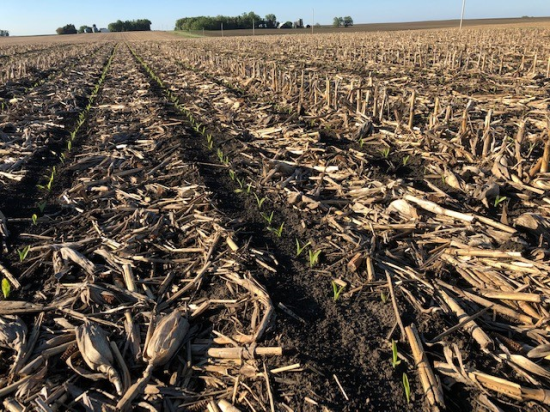 You may wonder why more farmers don’t use cover crop, no-till or strip-till practices. It’s a fair question. The methods I use require different management and mindset. In some ways, they are counter intuitive.
You may wonder why more farmers don’t use cover crop, no-till or strip-till practices. It’s a fair question. The methods I use require different management and mindset. In some ways, they are counter intuitive.
Looking back over time, the plow was considered a tool of progress. It was a form of agricultural work ethic creating wealth and prosperity from tilling the land. For some farmers, farming means “tilling the land,” and you can’t unhook the two.
However, science, technology and study are changing the game.
I think cover crops might have a place in our future, but the cost of seed and extra management must be offset somehow. The land I farm isn’t considered highly erodible, so these conservation practices aren’t a requirement. For me, no-till and strip-till provide a time and lifestyle benefit as well as the soil and water conservation benefits without sacrificing yield. The soybeans I grew with cover crops did very well, but I didn’t find a yield increase to offset the costs.
My mind is open to using cover crops on a broader scale someday. More farmers are deploying cover crops in response to calls for better water quality. In fact, one reason I didn’t seed cover crop cereal rye last fall was there was a shortage of seed and higher seed prices due to the demand. Many of us aren’t sitting still in this space.
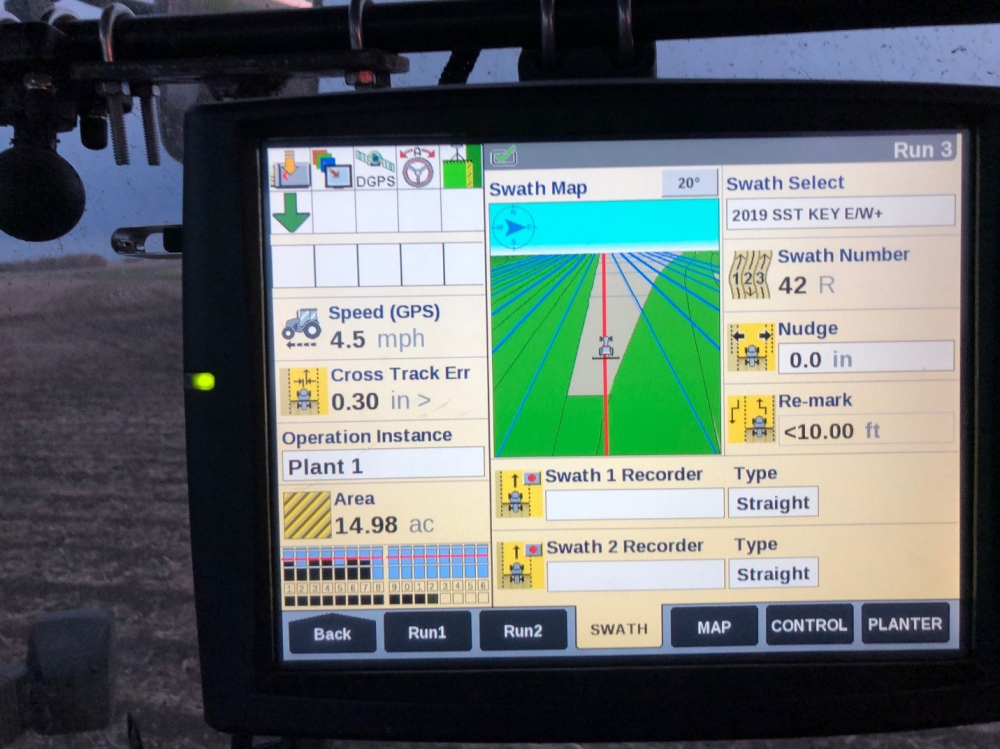
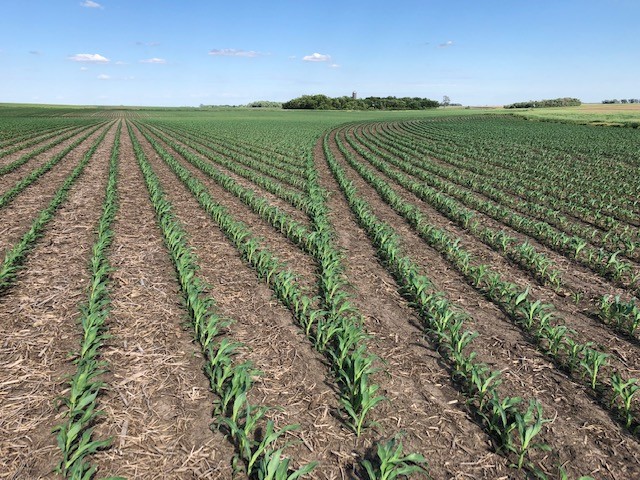
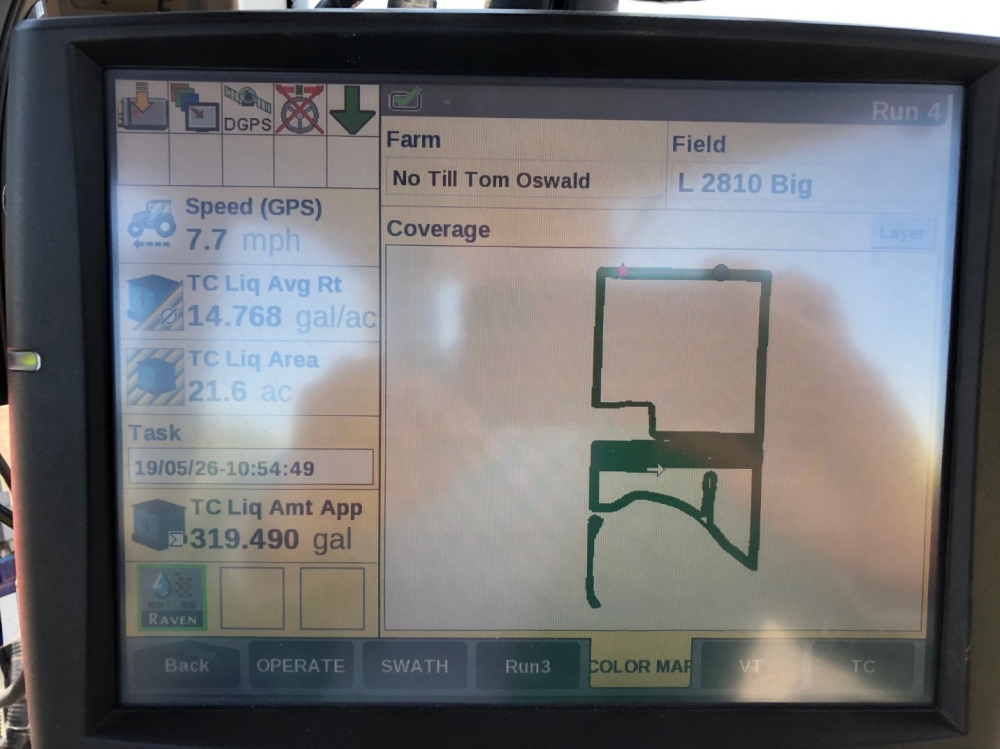
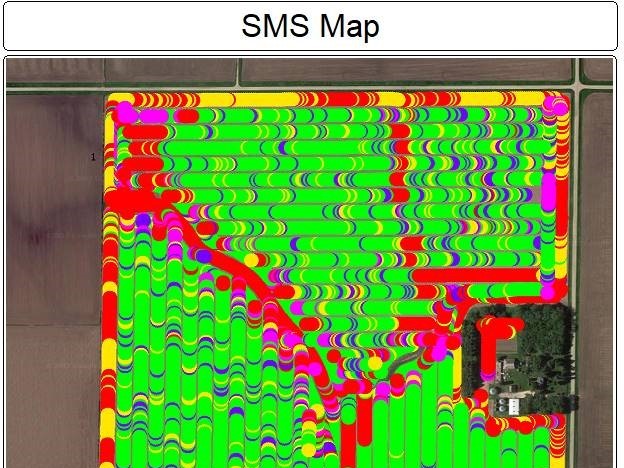
I had photos from planting corn last month but saved a one for this month. I noted the controllers and monitors for the sprayer, planter and strip-till fertilizer applicator. One feature that many farmers really like is swath control.
Swath control means that after product has been applied and logged to a map, the equipment can be set to automatically shut off sections or parts of the swath to reduce or eliminate overlap. The most visual result of this technology is when planting.
In the past, you would overlap planting into the border rows of the field. This wasted seed and could present harvesting problems and reduced yield.
Accurate GPS, computing power and programming are what make it possible for the planter to “turn off” individual rows in fractions of a second. The planter is delivering about 15 corn seeds per second or two seeds per foot of row. When you see the last plant stop at the last border row, you have to know that this all happened in the course of one-fifteenth of a second – that’s pretty darn cool.
Finally, a bit of fun. At my dad’s place, the farm cat loves to climb up on equipment to get a high vantage point. If you are standing or working nearby, he will land on your shoulders or in your lap in seconds. There’s a reason my dad named him “Nuisance.”
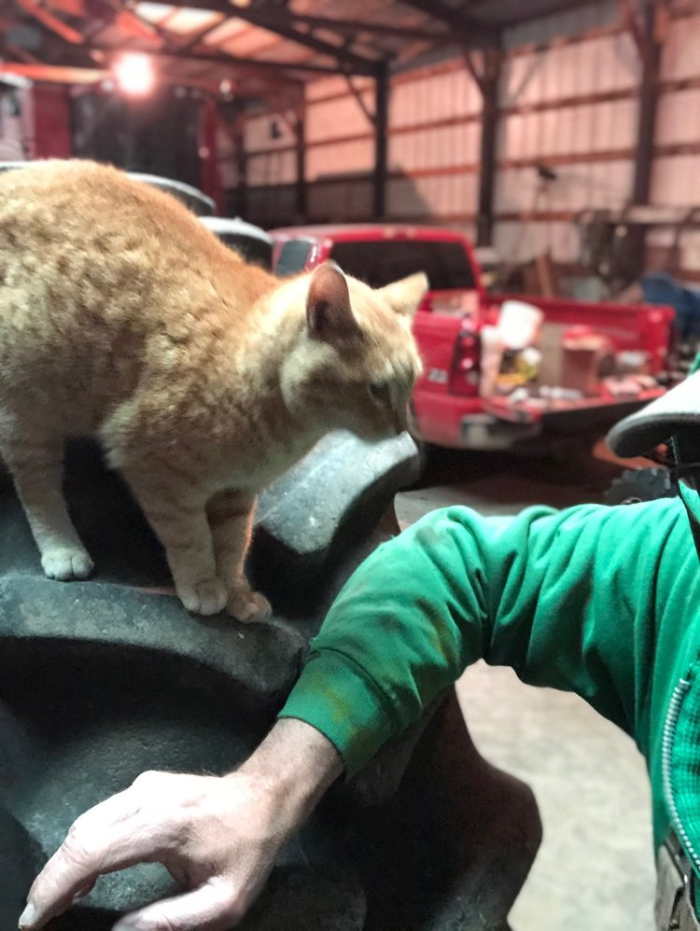
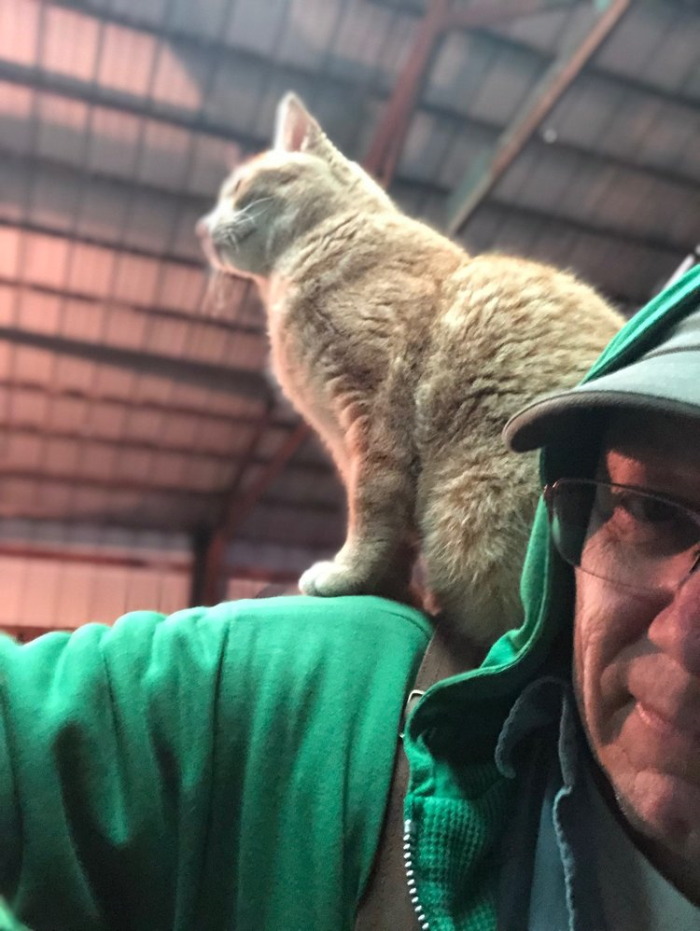
And if you’re wondering why I would want to take a selfie with a cat? My wife wanted photos because she called me when this was going on.
Until next time,
Tom